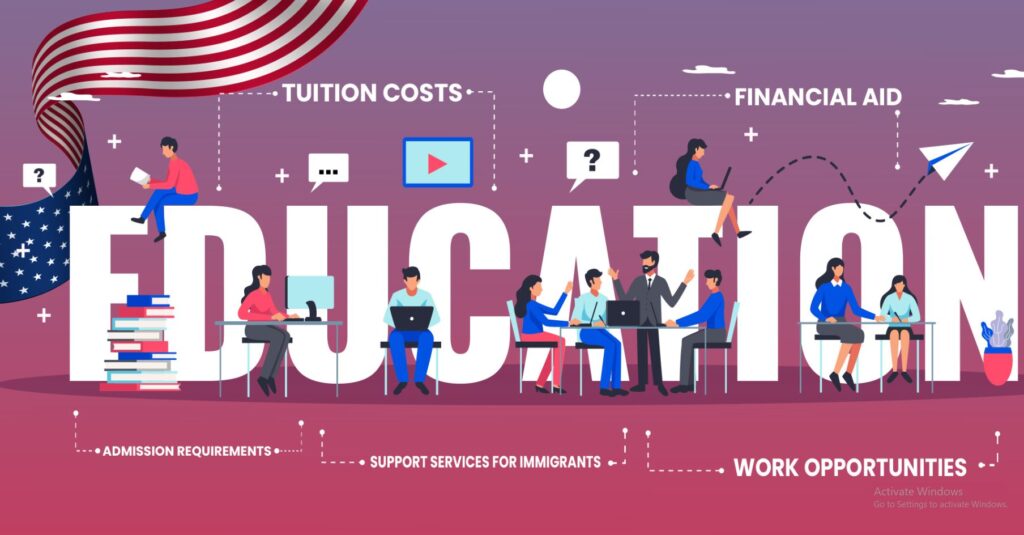The US Education System: Overview and What Parents Need to Know
The United States education system is renowned worldwide for its diversity, flexibility, and emphasis on providing students with broad opportunities for personal and academic growth. Understanding this complex system is essential for parents, guardians, and caregivers who seek to make informed decisions about their children’s educational journey. This comprehensive guide explores the structure, key components, challenges, and essential insights into the US education system that every parent needs to know.
Understanding the Structure of the US Education System
The US education system is divided into several distinct stages, each serving different developmental and academic purposes:
- Early Childhood Education: Often referred to as pre-kindergarten or preschool, this stage typically serves children ages 3 to 5 and focuses on foundational skills, socialization, and basic literacy and numeracy.
- Elementary School (Grades K-5): Covering kindergarten through fifth grade, elementary education builds the core academic skills, including reading, writing, mathematics, science, and social studies.
- Middle School (Grades 6-8): This transitional stage addresses early adolescence, introducing more complex subjects and critical thinking, alongside social and emotional development.
- High School (Grades 9-12): High school prepares students for higher education or the workforce with a mix of mandatory core courses and electives in fields like arts, technology, and vocational training.
- Postsecondary Education: Includes colleges, universities, community colleges, and vocational institutions offering associate, bachelor’s, master’s, and doctoral degrees.
The decentralized nature of the US education system means each state has the authority to govern its own public schools, resulting in a wide variety of curricula, standards, and testing requirements.
Key Features of US Public Education
Local Control and Funding
One of the most distinctive characteristics of the US education system is local governance. Public schools are primarily funded and managed at the district level, with school districts governed by elected school boards. Funding comes from a combination of local property taxes, state funds, and federal grants. This localized funding model leads to significant disparities in resources between affluent and low-income areas, affecting school facilities, teacher quality, and extracurricular offerings.
Compulsory Education and Attendance
Every state mandates compulsory education laws requiring children to attend school from approximately ages 5 to 18, though the exact ages vary by state. These laws are designed to ensure that all children receive at least a minimum level of formal education.
Curriculum and Standards
While states set broad educational standards, many follow the Common Core State Standards Initiative to unify expectations in math and English language arts. These standards emphasize critical thinking, problem-solving, and analytical skills rather than rote memorization.
The Role of Private and Charter Schools
Beyond public education, private schools and charter schools play a significant role in the US system. Private schools operate independently of government funding and often have religious or specialized educational missions. Charter schools are publicly funded but operate with greater autonomy than traditional public schools, often focusing on innovative teaching methods or particular student populations.
Parents considering these alternatives should evaluate curriculum rigor, tuition costs, admission criteria, and school culture carefully to ensure alignment with their child’s needs and family values.
Special Education and Support Services
The US education system provides robust support for students with disabilities under the Individuals with Disabilities Education Act (IDEA). Schools are required to develop Individualized Education Programs (IEPs) tailored to each student’s unique needs, ensuring access to appropriate accommodations and specialized instruction.
Additionally, many schools offer counseling, health services, English language learning (ELL) programs, and interventions for students facing academic or behavioral challenges.
Preparing for Higher Education: What Parents Should Know
The transition from high school to college or vocational training is a pivotal moment. Parents should be aware of the following:
- Standardized Testing: SAT and ACT scores often influence college admissions. Familiarity with test preparation options can greatly benefit students.
- Advanced Placement (AP) and Dual Enrollment: These programs allow high school students to earn college credits, potentially reducing higher education costs and time.
- Financial Aid and Scholarships: Understanding FAFSA (Free Application for Federal Student Aid), grants, scholarships, and work-study opportunities is critical to managing the rising costs of college education.
Challenges and Considerations in US Education
Despite its strengths, the US education system faces several challenges that parents should consider:
- Educational Inequality: Socioeconomic disparities often translate into unequal educational outcomes. Schools in underfunded areas may lack essential resources and experienced teachers.
- Standardized Testing Pressure: The heavy emphasis on standardized tests can create stress for students and educators, sometimes detracting from deeper learning.
- Teacher Shortages: Many districts experience shortages of qualified teachers, especially in subjects like math, science, and special education, impacting class sizes and instructional quality.
- Curriculum Controversies: Debates over curriculum content, including history and science education, can influence school environments and policies.
How Parents Can Engage Effectively
Active parental involvement is a proven factor in student success. Here are ways parents can engage:
- Regular Communication: Maintain open dialogue with teachers, counselors, and school administrators to monitor academic progress and address concerns promptly.
- Support Learning at Home: Encourage reading, homework completion, and intellectual curiosity beyond the classroom.
- Participate in School Activities: Attend parent-teacher conferences, school board meetings, and volunteer opportunities to influence school culture positively.
- Advocate for Resources: Engage in local education advocacy to push for equitable funding and policy reforms benefiting all students.
The Future of Education in the US
The US education system is evolving rapidly with advances in technology, shifts in workforce demands, and a growing emphasis on inclusivity and personalized learning. Trends to watch include:
- Blended and Online Learning: Expanding access through digital platforms and hybrid classroom models.
- Social-Emotional Learning (SEL): Integrating emotional intelligence and mental health support into curricula.
- Career and Technical Education (CTE): Expanding vocational training to align education with labor market needs.
- Equity-Focused Reforms: Increased efforts to close achievement gaps and ensure all students have opportunities to succeed.
Conclusion: Empowering Parents Through Knowledge
Navigating the US education system requires a comprehensive understanding of its structure, strengths, and challenges. By staying informed about educational stages, funding realities, school options, and evolving trends, parents can make empowered decisions that foster their children’s academic success and personal growth.
We encourage parents to proactively engage with educators, advocate for quality education, and support their children’s learning journey. Together, we can help build an education system that fulfills the promise of opportunity and excellence for every student in America.
Keywords: US education system, education in America, American public schools, school stages in the US, private vs public schools US, special education US, college preparation US, educational challenges America, parent involvement in education, future of education US





















